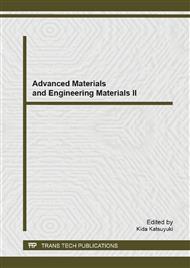p.725
p.729
p.733
p.737
p.741
p.745
p.750
p.754
p.758
The Application Research of Six-Axis Force Sensor Used by Trans-Femoral Prosthesis
Abstract:
Intelligent bionic leg (IBL) is an advanced trans-femoral prosthesis. First, the conception and structure component of IBL are introduced. Then, working principle of six-axis force sensor is analyzed in detail. The type selection and design of filter are discussed. In the end, the data filtering of low pass filter based on hamming window function is established and simulation is done. The simulation indicates that force and torque signal has a significant improvement after filtering and the filter designed in the paper is reasonable.
Info:
Periodical:
Pages:
741-744
Citation:
Online since:
April 2013
Authors:
Price:
Сopyright:
© 2013 Trans Tech Publications Ltd. All Rights Reserved
Share:
Citation:


